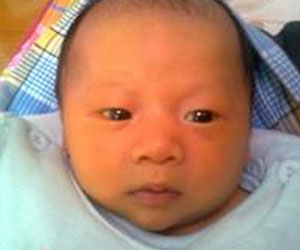
Neonatal jaundice is marked by yellowing of general skin, mucous membrane and sclera. The disease is related to congenital factors of fetus, hence the name "neonatal jaundice". The disease involving a series of disorders of elevation of neonatal serum bilirubin is divided into two types of physiological jaundice and pathological jaundice. Physiological jaundice occurs 2 to 3 days after birth, reaches its climax in 4 to 6 days and disappears in 7 to 10 days. It may last a longer time in premature infants.
These infants have no other clinical symptoms in general except mild poor appetite. If jaundice occurs in about 24 hours after birth, lasts for 2 to 3 weeks or worsens persistently in severe cases, or occurs again after relief, then it is called pathological jaundice. Delayed feeding, vomiting, cold, lack of oxygen, delayed defecation, etc. may exacerbate physiological jaundice; neonatal hemolytic syndrome, congenital biliary atresia, infantile hepatitic syndrome, septemia, etc. may give rise to pathological jaundice. This section mainly discusses pathological jaundice.